The Crowd Roars

Brief Synopsis
Cast & Crew
Richard Thorpe
Robert Taylor
Edward Arnold
Frank Morgan
Maureen O'sullivan
William Gargan
Film Details
Technical Specs

Synopsis
Scrappy choirboy Tommy McCoy earns pennies singing at the pool hall, hoping to help his hard working mother. His father Brian, a shirking former vaudevillian, decides to have Tommy sing before a boxing match, and when a member of the crowd goads him, also has Tommy box the man's son. Because Tommy is successful at fighting, too, champion Johnny Martin sponsors him on a road trip. Brian gambles and drinks away their money, even though Tommy tries to send some home. When Tommy's mother Laura dies, Brian regrets his behavior, but doesn't change. Many years later, Tommy is a successful boxer. When his old friend Johnny comes out of retirement, Tommy tries to go easy on him in a match, but Johnny is accidentally killed from one of the blows. Although Martin's wife knows that Tommy is blameless, the newspapers call him "Killer" McCoy. His guilt over Johnny and his estrangement from Brian after Brian sells his contract to gambler Jim Cain makes Tommy decide to quit the ring. He tries to find other work, but can't, so he eventually goes back to Cain, who promotes him as a fighter who wins on "lucky" punches, and wins alot of money on long odds. In training at an estate owned by Cain under his real name of "Carson," Tommy meets his daughter Sheila. They fall in love, but, as Sheila knows nothing about her father's business, Cain is against their relationship. They continue to meet secretly and Tommy plans to give up fighting, but, just as he is about to enter the ring in a championship fight, he receives word that Sheila and Brian have been kidnapped by rival gambler "Pug" Walsh. Walsh expects Tommy to lose in the eighth round, but wants him not to look like he is throwing the fight. Tommy holds out, despite a terrible beeting, but finally knocks out his opponent when he sees that Sheila is all right. Brian, who had feigned a heart attack to help her escape, is killed by one of the kidnappers. Realizing that they love Sheila more than they dislike each other, Tommy and Cain become friends and Sheila promises to help reform them both. Finally, Tommy and Sheila are married.

Director

Richard Thorpe
Cast

Robert Taylor

Edward Arnold
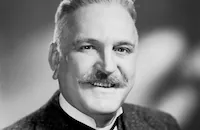
Frank Morgan

Maureen O'sullivan

William Gargan

Lionel Stander
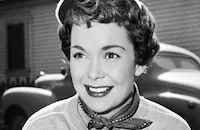
Jane Wyman
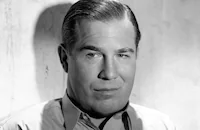
Nat Pendleton
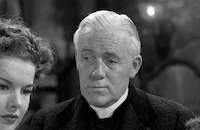
Charles D. Brown

Gene Reynolds

Donald Barry

Donald Douglas

Isabel Jewell

J. Farrell Macdonald
Horace Mcmahon
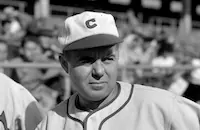
Ray Walker
Harry Tyler
Cliff Clark
Dick Rich
Maxie Rosenbloom
Jimmy Mclarin
Jack Roper
Elspeth Dudgeon
Gwendolyn Logan
Hudson Shotwell
John Kelly
Frank Sully
Eddie Syracuse
Emma Dunn
Mickey Rentschler
James Donlan
Dick Elliott
Charles Williams

Lee Phelps
Dick Wessel

Roger Moore
Anthony Warde
Dan Toby
Larry Mcgrath
Morrie Cohan
John Dilson
Hooper Atchley
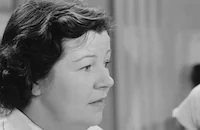
Margaret Bert
Jack Gardner
Kenneth Nolan
Charles Sherlock

Douglas Mcphail
Jack Egan
Sherry Hall
Mickey Mcavoy
Dewey Robinson
Hal Le Seur
Brent Sargent
Lester Dorr
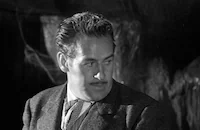
Roy Barcroft
Nick Copeland
Garry Owen
Al Hill

Paul Fix
William Norton Bailey
Patsy Perroni
Mike Blair
Frank Owen
Sammy Mckim
William O'brien
Charles Randolph
Henry Andrews
Charles Sullivan
Henry Roquemore
Jack Pennick
Joe Caits
Crew
George Bruce
George Bruce
Victor Fleming
Cedric Gibbons
Eddie Imazu
Thomas Lennon
Oliver Marsh
Conrad A. Nervig
George Oppenheimer
Harry Ruskin
John Seitz
Douglas Shearer
Dolly Tree
Slavko Vorkapich
Edward Ward
Edwin B. Willis
Sam Zimbalist
Dolph Zimmer

Film Details
Technical Specs

Articles
The Crowd Roars (1938)
The Crowd Roars (1938), along with Robert Taylor's previous film A Yank at Oxford (1938), was part of a concerted effort by MGM to give Taylor a more masculine screen persona. Although he was extremely successful as a romantic lead in films such as Camille (1936) and easily the most handsome lead actor of the time, both his looks and the roles he had been given so far led to concerns within the studio that he was being perceived as effeminate. These concerns were reinforced by a slight drop in his box office receipts in 1937.
The studio's masculine makeover for Taylor included not only new roles, but a careful publicity campaign. In one press release, they compared Taylor's physique before and after training for the role; among other things, it stated that his chest measurements increased from 37 inches to 43 inches and his biceps from 12 to 14 ¾ inches. A few days before the film opened Hedda Hopper wrote in her widely syndicated column: "They certainly made Bob Taylor work overtime, proving he was a he-man in that picture. Never had to prove it to me--I have always known it." The studio also released a publicity still with the title "Film Fighter Takes Bride," depicting Robert Taylor and Maureen O'Sullivan's fictional wedding in the film. (In real life, Taylor wedded Barbara Stanwyck the following year.) At the same time, the studio hedged its bets by giving Taylor glamour-lighting in some of his close-ups and having him wear a tuxedo at a ball.
The Crowd Roars was produced in April and May of 1938. Because Richard Thorpe was already working on Three Loves Has Nancy (1938), Victor Fleming stepped in to film retakes in July; the film was released theatrically a few weeks later, in early August. The noted boxers Max "Slapsie Maxie" Rosenbloom, Jimmy McLarnin and Jack Roper acted as consultants and also appeared as themselves in brief cameos.
The trade reviews in papers such as Variety and The Motion Picture Herald were mostly enthusiastic. The Los Angeles Times film critic Philip K. Scheuer noted up front that the film was "intended to vindicate the handsome young actor's manliness, which has been impugned in some quarters." He went on to describe it as "corking entertainment, the best in the prize-ring line since Wayne Morris knocked 'em dead in Kid Galahad [1937]." Frank S. Nugent of the New York Times was more skeptical, writing: "If you can visualize Robert Taylor as a prize-fighter known as Killer McCoy, you won't find it hard to accept the other fictional premises [...]" Nugent nonetheless admitted that he found the depiction of McCoy's life as a prize-fighter "almost credible, though in spots the details do seem rather elegantly MGM."
In particular, the child actor Gene Reynolds was widely praised for his touching and believable performance as the young Tommy McCoy. Also watch for montage sequences by Slavko Vorkapich; the most memorable is the first, which depicts Tommy's transition from a young boy to a professional fighter using repeated superimpositions of the word "YEARS." The film was remade in 1947 as Killer McCoy, directed by Roy Rowland and starring Mickey Rooney.
Director: Richard Thorpe
Producer: Sam Zimbalist
Screenplay: Thomas Lennon, George Bruce and George Oppenheimer, from a story by George Bruce
Photography: John Seitz
Art Direction: Cedric Gibbons
Music: Edward Ward
Film Editor: Conrad A. Nervig
Montage Effects: Slavko Vorkapich
Cast: Robert Taylor (Tommy McCoy), Edward Arnold (Jim Cain/Jim Carson), Frank Morgan (Brian McCoy), Maureen O'Sullivan (Sheila Carson), William Gargan (Johnny Martin), Lionel Stander ("Happy" Lane), Jane Wyman (Vivian), Nat Pendleton ("Pug" Walsh), Charles D. Brown (Bill Thorne), Gene Reynolds (Tommy McCoy as a boy), Emma Dunn (Laura McCoy, uncredited).
BW-91m.
by James Steffen
SOURCES:
"Crowd Roars Vigorous Drama of Prize Ring." Los Angeles Times, July 28, 1938, p.10. "Film Fighter Takes Bride." Los Angeles Times. August 22, 1938, p.11. Hopper, Hedda. "Hedda Hopper's Hollywood." Los Angeles Times. August 3, 1938, p.9. Nugent, Frank S. Review of The Crowd Roars. New York Times. August 5, 1938, p.11. Scheuer, Philip K. "Taylor film top-notch attraction." Los Angeles Times. August 25, 1938, p.11. Scott, John. "Film flaw snickers irk studios to action." Los Angeles Times. May 29, 1938, p. C1. Wayne, Jane Ellen. Robert Taylor. New York: St. Martin's Press, 1989.

The Crowd Roars (1938)
Quotes
Trivia
Notes
Pre-release titles of the film were Knockout, Give and Take and Stand Up and Fight. Stand Up and Fight later became the release title of an early 1939 Robert Taylor film that co-starred Wallace Beery (see below). Although Oliver Marsh is listed as the Photographer in the Hollywood Reporter production charts for several weeks at the beginning of the production, only John Seitz is credited on the film and in reviews. A Hollywood Reporter news item noted that Victor Fleming was assigned to direct two additional scenes for the film in mid-July 1938 because director Richard Thorpe was already on another assignment, and that actors Emma Dunn and Paul Fix were to be featured in the scenes. Although the CBCS credits Leona Roberts with the role of "Laura McCoy," that role was played by Dunn in the released film.
According to several reviews, this was the second film in M-G-M's campaign to give screen idol Taylor a more "rugged" image after several years of being called "pretty Robert Taylor" in the press. The first of the films was A Yank at Oxford, released earlier in the year (see below), which also co-starred Maureen O'Sullivan and was one of Taylor's most popular films. At the end of 1938 Taylor was ranked sixth among top box office stars by an Motion Picture Herald exhibitor's poll, having fallen from third place on the same poll in 1937. A news item in Hollywood Reporter noted that the film's release date was Taylor's birthday (his twenty-seventh). Maxie Rosenbloom, Jim McLarin and Jack Roper, who played themselves, were well known boxers of the time. This film has no relation to the 1932 Howard Hawks directed film of the same name. M-G-M made another version of the story under the title Killer McCoy in 1947. That film starred Mickey Rooney in the title role and James Dunne as his father.















